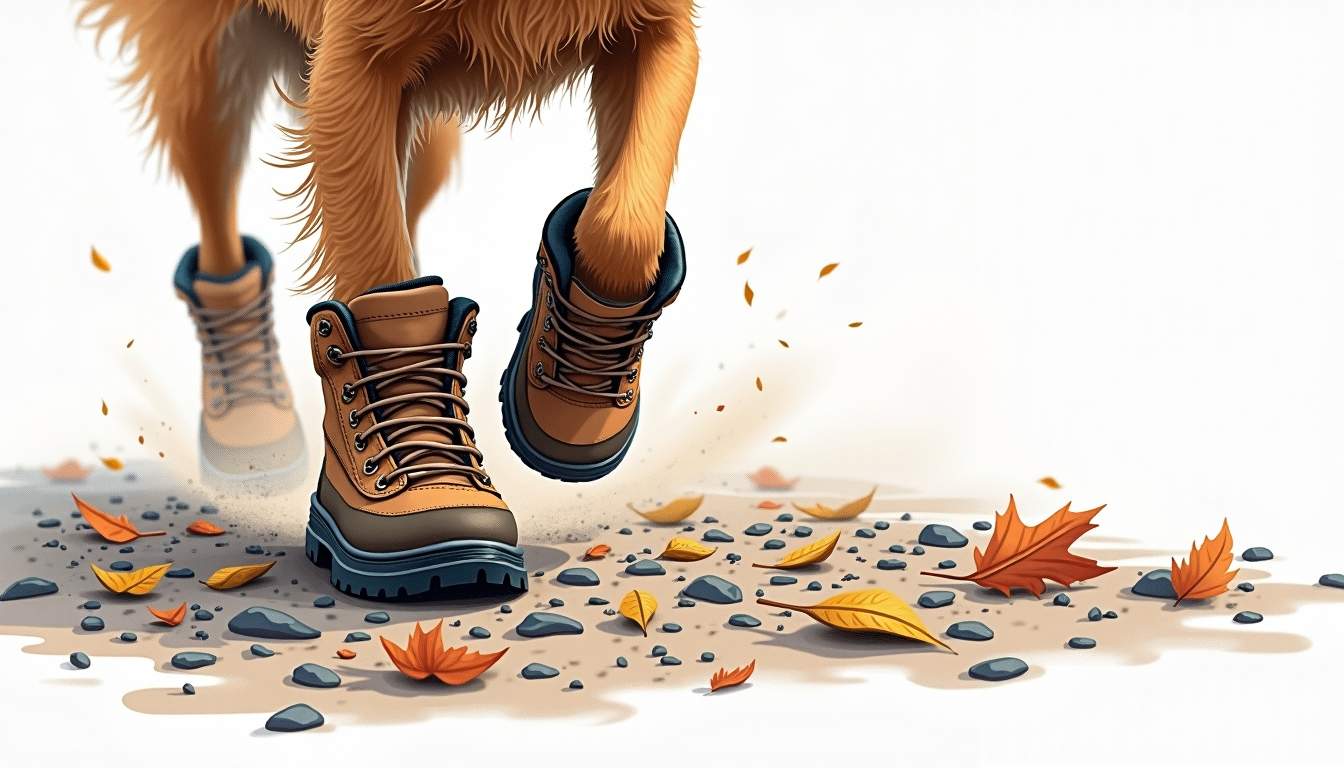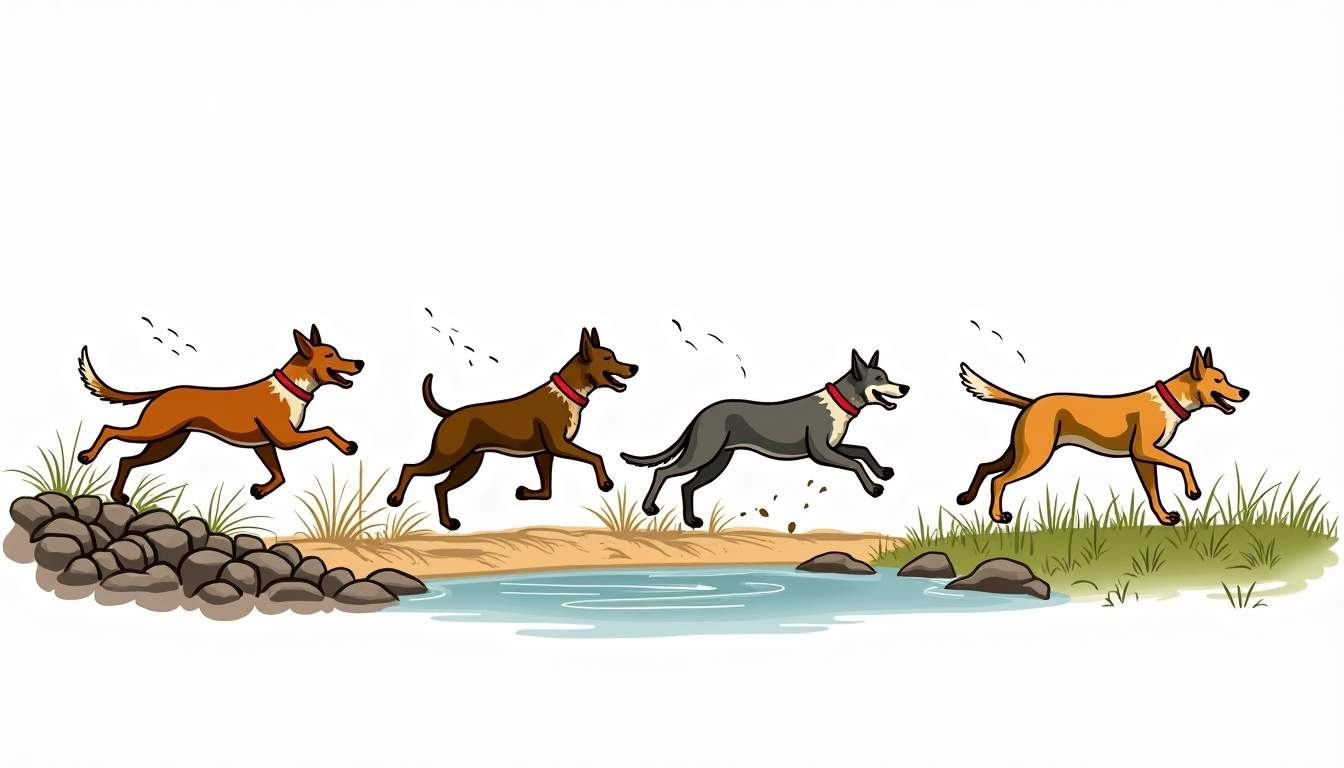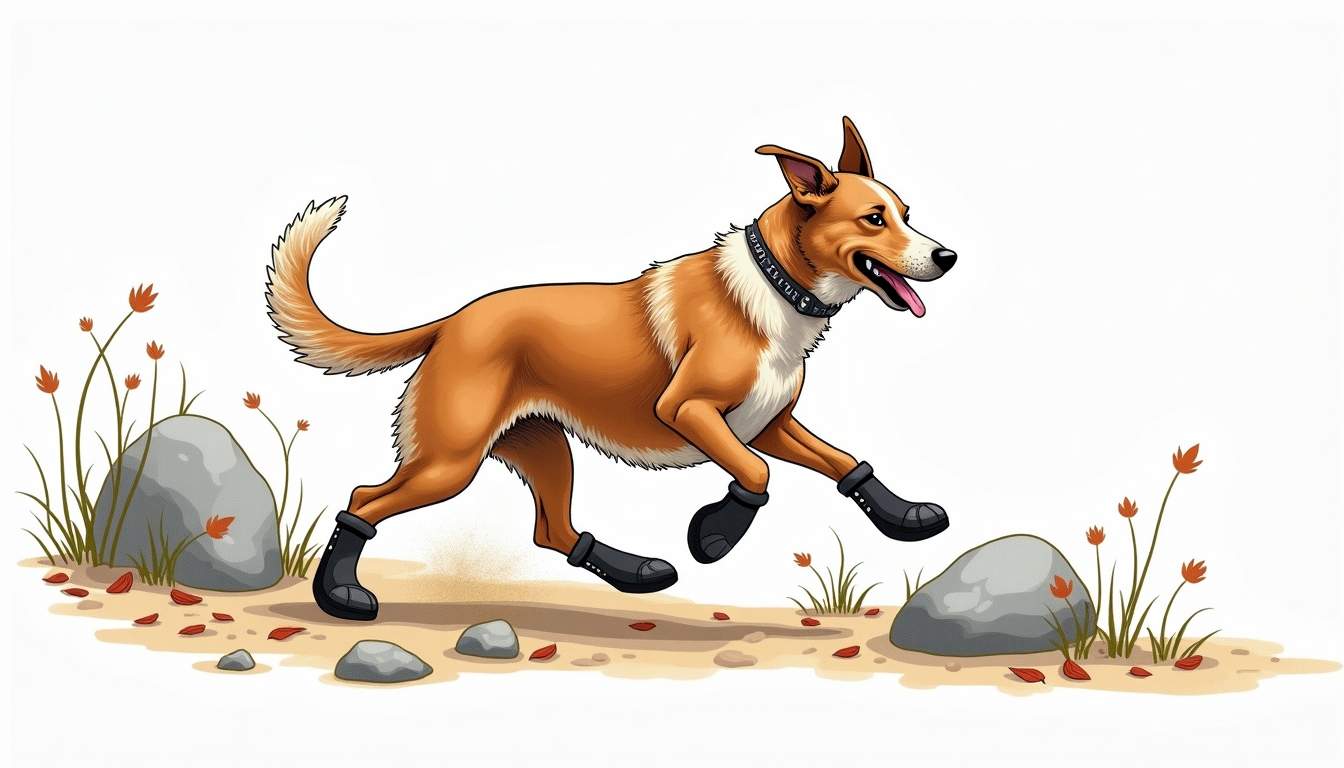Exploring trails, beaches, city streets and snowy paths with a canine companion brings joy and exercise, but also exposes paws to hazards. Premium dog footwear protects against hot pavement, sharp rocks, icy surfaces and salt, while providing better traction and comfort for active dogs. Choosing the right boots and introducing them properly can make outdoor excursions safer and more enjoyable for both dog and human.
Why Invest in Premium Dog Footwear
Dog paws are remarkably resilient, but they are not indestructible. Thin paw pads can blister from hot asphalt, split on rough terrain, or become painfully cold on frozen ground. Premium footwear solves many of these problems by offering durable materials, cushioned insoles, and secure fastenings that stay put during vigorous activity.
Beyond basic protection, premium boots often provide superior fit, breathability and traction. These features reduce the risk of slips and sprains on wet rocks or slick snow, and help maintain paw health over time. For dogs with allergies, sensitive pads or recovering injuries, quality footwear can be a vital part of a care plan prescribed by a veterinarian.
Investing in higher-end boots also extends the range of activities your dog can enjoy safely — from long summer hikes on sunbaked trails to winter walks on icy sidewalks. Many premium models use flexible, non-slip soles and seam-sealed materials that resist abrasions and moisture while still allowing natural paw movement. This balance between protection and mobility means dogs are less likely to develop compensatory gait changes that can lead to joint stress or muscular imbalances over months and years.
Practical care and longevity are other advantages: well-made footwear is easier to size correctly, with adjustable straps or elastic gussets that prevent rubbing, and can be cleaned or wiped down without degrading the sole. While the upfront cost is higher than basic booties, owners often find the expense offset by fewer vet visits for pad injuries and the ability to keep active year-round. When selecting a pair, consider materials (rubber versus synthetic composites), tread pattern for your typical terrain, and how quickly your dog adapts during short trial walks before committing to longer outings. For more options and expert recommendations, visit Supreme Dog Garage.
Materials and Construction: What Makes a Boot “Premium”
Not all dog boots are created equal. Premium models typically combine several materials to balance durability, flexibility and comfort. A reinforced toe cap shields against punctures, while a flexible midsole allows natural paw movement. Breathable mesh panels prevent overheating and help wick moisture away from the skin.

High-quality outsoles are a defining feature. Look for grippy rubber compounds with multidirectional tread patterns that perform on mud, rock and ice. Seams should be double-stitched or sealed to prevent water intrusion, and adhesives used in construction should withstand repeated flexing without delaminating.
Insulation and Thermal Considerations
For cold-weather use, premium boots integrate insulating materials like fleece liners, Thinsulate or closed-cell foam to retain warmth without adding excessive bulk. Thermal boots often have a water-resistant outer shell and a tight cuff to block snow. For hot climates, lightweight, ventilated designs protect from heat while allowing airflow to prevent overheating.
Fastenings and Fit Features
Velcro straps, adjustable elastic collars and hook-and-loop closures are common, but premium boots may include cinch cords or buckle systems for a more precise fit. A boot that slips off is more dangerous than none at all, so secure fastenings and a well-designed ankle cuff are essential. Reinforced heel tabs aid in putting boots on, while reflective trims improve visibility for evening walks.
Choosing the Right Boot for Different Terrains
Terrain dictates the type of footwear needed. Rocky trails require tough outsoles and protective toe caps. Snowy and icy conditions benefit from insulated boots with strong traction, and often a higher ankle cuff to keep out snow. Sandy beaches and deserts call for lightweight, breathable boots that resist abrasion and allow sand to be shaken out easily.

Waterproof boots are ideal for river crossings, marshes and rainy weather, but they must still breathe to prevent maceration of the skin. For mixed-use hiking where conditions change frequently, a versatile midweight boot with replaceable soles or modular liners offers the best compromise.
Urban and Pavement Protection
City walks expose paw pads to heat, chemicals and rough concrete. Thin, flexible boots with shock-absorbing insoles reduce impact and protect against hot pavement and deicing salts. Sleeker profiles and low-cut designs improve comfort for everyday urban use without restricting movement.
Sizing and Fitting: Ensuring Comfort and Security
Correct sizing is the single most important factor for comfort and function. Premium brands provide detailed sizing guides and sometimes measuring tools to capture paw width, length, and the height of the ankle. Measurements should be taken when the dog is standing to account for paw splay under weight.
A properly fitted boot allows a little room for the pads to flex but not enough for the foot to slide. Too tight a fit restricts circulation and causes chafing; too loose a fit causes slipping and blisters. Many owners benefit from trying several sizes or styles to find the best match for a particular breed and paw shape.
Breaking In Boots Gently
Even premium footwear requires a gradual introduction. Short, positive sessions at home help the dog get accustomed to the feeling of boots. Reward-based training with treats and praise encourages acceptance. Once comfortable indoors, increase duration and test on short outdoor routes before attempting long hikes.
Care and Maintenance for Longevity
Premium boots are an investment; proper care prolongs their lifespan. Rinse off salt, mud and sand after each outing and allow boots to air dry away from direct heat sources, which can degrade adhesives and materials. Replace worn insoles and check seams periodically for signs of separation.
Storing boots in a cool, dry place prevents mold and material breakdown. For boots with removable liners, wash liners periodically according to manufacturer instructions to maintain hygiene and reduce odors. If a boot sustains damage beyond simple repair, replacing it is safer than risking a compromised barrier during an adventure.
Repair Tips for Minor Damage
Small tears or separated seams can sometimes be fixed with fabric-friendly adhesives or reinforced stitching. Quick fixes are useful in a pinch, but repairs should restore structural integrity. For critical wear areas like soles or toe caps, professional repair or replacement is recommended to maintain protection levels.
When Footwear Is Especially Beneficial
Certain dogs benefit more from boots than others. Senior dogs with thinning paw pads, dogs undergoing recovery from paw injuries or surgeries, and breeds with naturally sensitive feet are prime candidates. Dogs that react badly to road salt or whose paws crack in cold weather often show marked improvement with consistent footwear use.
Working dogs, hunting companions and canine athletes also require durable, high-performance footwear to maintain paw health through intense activity. For these dogs, premium models with replaceable parts and robust warranties offer the best long-term value.
Health Considerations and Veterinary Advice
Before regular use on dogs with medical conditions, consult a veterinarian. Issues like fungal infections, interdigital cysts or circulatory problems may require specific footwear choices or alternative therapies. A vet can advise on safe durations for wearing boots and on signs that indicate an adverse reaction, such as swelling, limping or persistent licking of the paw.
Top Features to Prioritize When Shopping
Several features consistently define excellent dog footwear. Look for non-slip outsoles, lightweight but protective materials, adjustable closures, and breathable liners. A snug, ergonomic fit and quality construction will minimize slippage and maximize comfort during long outings.
Additional useful attributes include reflective panels for low-light safety, gusseted tongues to keep debris out, and quick-dry fabrics for wet conditions. Brands that offer multiple widths and sizes, clear sizing charts and trial periods make the shopping experience less risky for buyers.
Balancing Price and Value
Price often correlates with materials and durability, but the most expensive boot isn’t always the best fit for every dog. Consider the intended use: casual urban walks do not require the same ruggedness as alpine trekking. Investing in a high-quality pair for frequent or demanding outings usually pays off compared to repeatedly replacing cheaper alternatives.
Practical Tips for Adventuring with Boots
Plan routes based on the dog’s acclimation to footwear. Begin with short, familiar paths and gradually extend mileage. Monitor paws at regular intervals for slipping, hot spots or debris trapped in the boot. If a dog shows signs of discomfort, stop and check the fit—minor adjustments can prevent larger problems.

Carry spare boot straps or a compact repair kit for long trips, since losing a closure mid-hike can leave a paw unprotected. When crossing streams or muddy sections, remove boots only if the path is unquestionably safe; otherwise, waterproof boots will perform better than bare paws in many situations.
Seasonal Considerations
Rotate boots to match seasonal needs. Insulated winter boots should give way to lightweight, breathable options in summer. For transitional seasons, select moderate-weight boots with removable liners to adapt quickly to changing conditions.
Conclusion
Premium dog footwear offers more than a fashion statement. It is a practical tool that enhances safety, comfort and performance for outdoor adventures. By choosing boots tailored to terrain, fit and the dog’s individual needs, many common paw problems can be avoided.
Preparing a dog for booted outings with patient training and proper fit checks, combined with routine care and maintenance, rewards both dog and owner with longer, more comfortable adventures in the wild, on city streets, and beyond.





